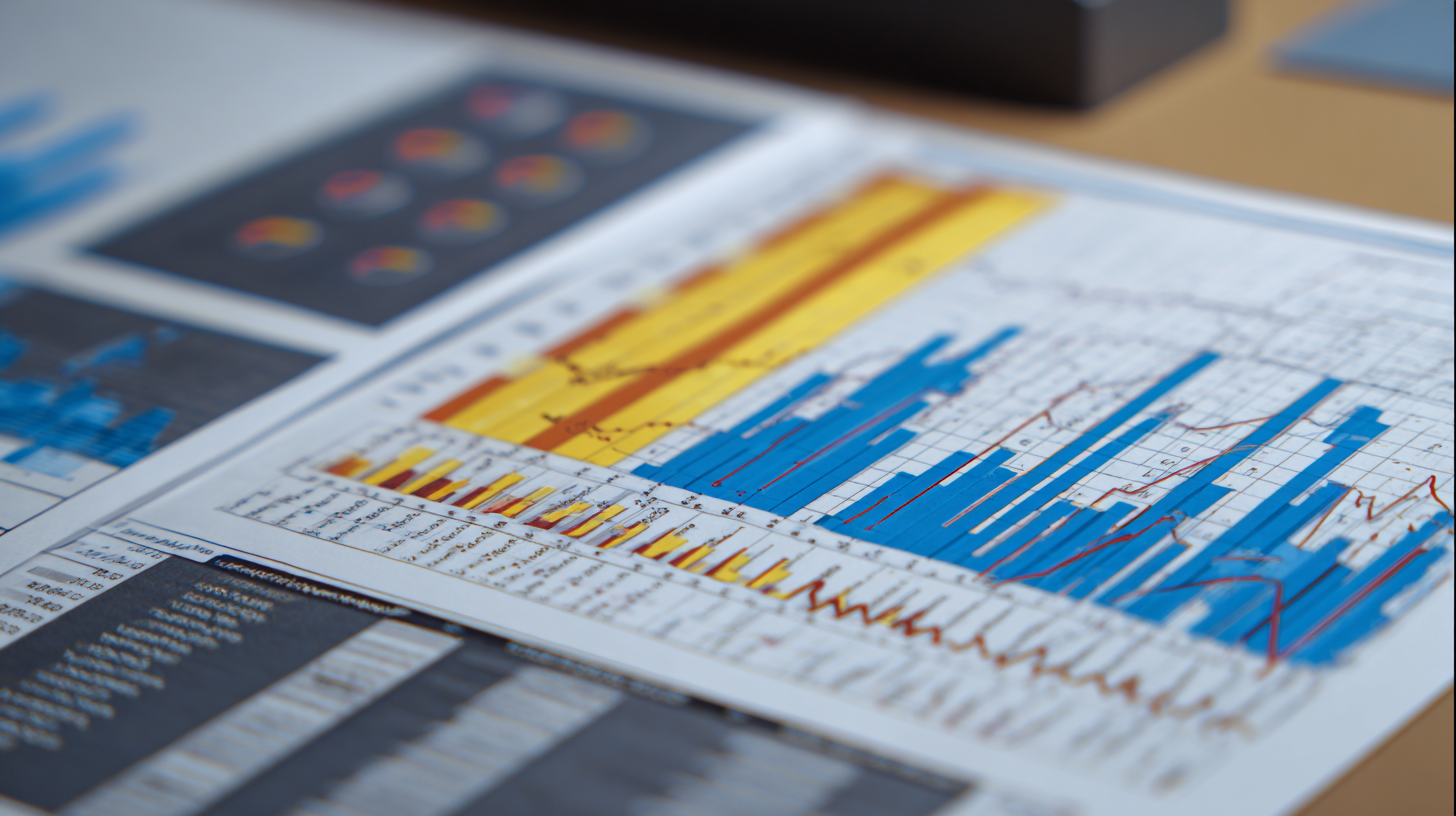In the ever-evolving landscape of data visualization and project management, leveraging Ppf Plotter Data has become a critical element for professionals seeking to enhance the precision and efficacy of their projects. According to a 2022 industry report by the Data Visualization Society, effective utilization of plotting data can increase project accuracy by up to 30%, underscoring the necessity of mastering this tool. As businesses strive to operate with greater efficiency, the importance of understanding the nuances of Ppf Plotter Data cannot be overstated.

Industry expert Dr. Emily Zhang, a leading figure in data analytics, emphasizes the transformative power of data visualization by stating,
"When you effectively harness Ppf Plotter Data, you unlock insights that drive informed decision-making and innovation."This sentiment highlights the crucial role that well-analyzed data plays not only in project outcomes but also in fostering a culture of data-driven decision-making among teams. By focusing on the following top five tips, professionals will be better equipped to utilize Ppf Plotter Data to its fullest potential, ensuring that their projects not only meet but exceed their objectives.
When it comes to effectively utilizing PPF (Production Performance Forecast) plotter data in projects, the collection of
precise and relevant data is paramount. According to a recent report by the International Society for Performance Engineering, organizations that prioritize
accurate data collection can enhance their decision-making processes by up to
35%. To achieve this, it is crucial to establish robust data collection protocols that leverage automated tools.
Automation can significantly reduce human error, ensuring that the data gathered is not only timely but also reliable.
Moreover, ensuring the quality of collected data is essential. A study from the Journal of Data Analysis indicates that implementing systematic validation checks can improve data quality by
40%. This includes cross-referencing data with multiple sources and utilizing established benchmarks within your industry. By embedding these best practices into the early stages of your project,
you can create a reliable database that will serve as a foundation for insightful analyses and informed project executions. Such diligence in the data collection process ultimately results in a clearer understanding of performance trends, empowering teams to make data-driven decisions and optimize outcomes effectively.
Analyzing Ppf Plotter data is essential for accurate project forecasting in marine navigation and sailing. By leveraging this data, project managers can better understand trends in real-time conditions, such as wind speed and direction, which are crucial for planning efficient routes. The incorporation of advanced analytics can transform raw plotter information into actionable insights, helping to improve decision-making processes. Employing these data-driven approaches can significantly enhance the predictability of project timelines and resource allocation.
Smart weather routing serves as an invaluable tool for optimizing nautical journeys. By integrating features like collision warnings and extended AIS ranges, navigators can anticipate and mitigate potential hazards during their travels. An example of this is a service that expands AIS visibility up to 200 nautical miles, allowing sailors to receive critical updates beyond traditional ranges. This level of foresight not only enhances safety but also improves operational efficiency, ultimately leading to more successful project outcomes.
The integration of PPF plotter data with other software tools is essential in enhancing project outcomes, particularly in the automotive protection and customization sectors. With the rise of technology-driven solutions, the ability to synchronize data from different platforms allows for more precise and efficient results. Recent advancements highlight the need for seamless integration, enabling designers and manufacturers to optimize their processes and deliver high-quality products.
One key tip for using PPF plotter data effectively is to ensure compatibility with various design software. This can significantly reduce errors and save time during production. For example, using software that supports direct import of PPF information can streamline the workflow, allowing for quicker adjustments and adaptations as needed. Another important aspect is maintaining clear communication between departments—sharing PPF data with marketing and sales teams can enhance customer engagement by providing better insights into product customization options.
Moreover, utilizing advanced analytics tools to evaluate PPF plotter data can lead to actionable insights regarding material usage and project efficiency. In a sector where precision is paramount, leveraging data analytics not only improves decision-making but also helps in cost reduction. According to industry reports, companies that integrate such systems see up to a 25% increase in overall project efficiency, underscoring the importance of a holistic approach to data management in automotive applications.
| Tip No. | Tip Description | Software Tools | Use Cases |
|---|---|---|---|
| 1 | Normalize Ppf Data for Consistency | Excel, Python | Data comparison across multiple datasets |
| 2 | Utilize Visualization Tools | Tableau, Power BI | Presenting data insights to stakeholders |
| 3 | Integrate with Project Management Software | Asana, Trello | Tracking project progress with data insights |
| 4 | Automate Data Reports | Google Sheets, Zapier | Creating regular update reports for teams |
| 5 | Leverage Cloud Storage for Collaboration | Dropbox, Google Drive | Sharing access to data across teams |
Visualizing Ppf plotter data is a crucial step in enhancing decision-making processes in various projects. By transforming raw data into comprehensible visual formats, stakeholders can quickly grasp complex information. Utilizing graphs, charts, and heat maps allows for the identification of patterns and trends that might otherwise remain hidden. When data is visualized effectively, it becomes easier to communicate insights among team members, paving the way for informed discussions and strategic planning.

Incorporating interactive visual tools can further elevate the impact of Ppf plotter data. For instance, dashboards that allow users to filter, zoom, and manipulate data visualizations can provide deeper insights in real-time. This not only facilitates better understanding but also empowers teams to make agile decisions based on the most recent data trends. By prioritizing effective visualization techniques, projects can leverage Ppf plotter data to drive impactful outcomes and foster a culture of data-driven decision-making.
When utilizing Ppf plotter data in your projects, it is crucial to be aware of common pitfalls that can hinder your analysis. One significant mistake is misinterpreting the data due to a lack of context. Ppf plotters generate numerous data points, but without understanding the underlying conditions, it's easy to draw erroneous conclusions. Always ensure you have a clear grasp of the data's origin and the factors influencing it to provide accurate interpretations.
Another common issue is not adequately validating the data before use. Relying on unverified data can lead to misleading outcomes, especially in critical projects. It's essential to cross-check the Ppf plotter data with other reliable sources or consistency checks to ensure its credibility. Moreover, overlooking the importance of visualizing data effectively can result in a failure to communicate insights to stakeholders. Employing proper visualization techniques can clarify interpretations and enhance the overall impact of your findings.











